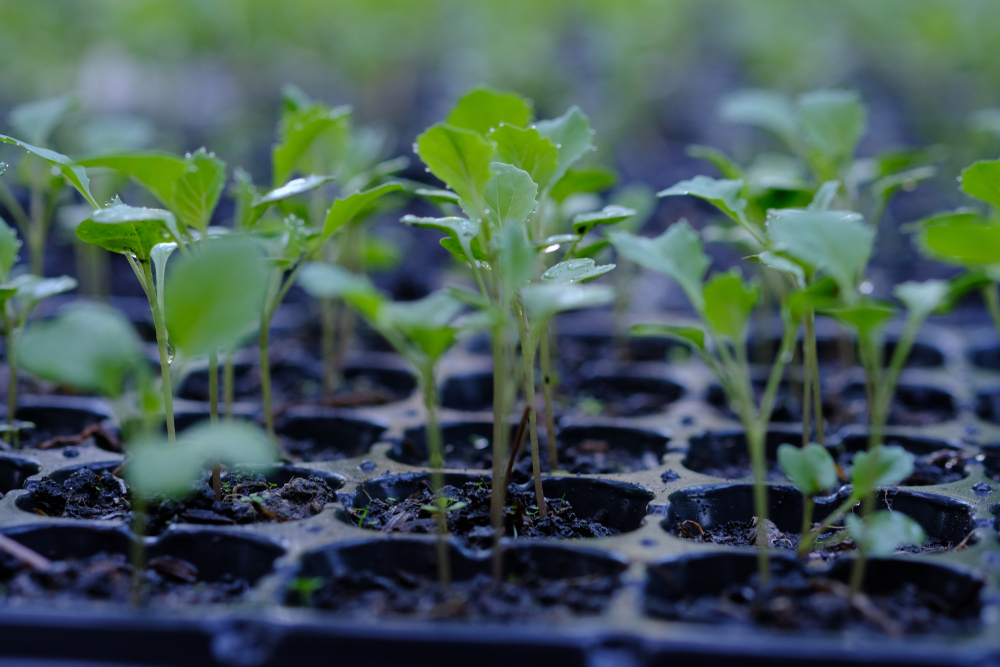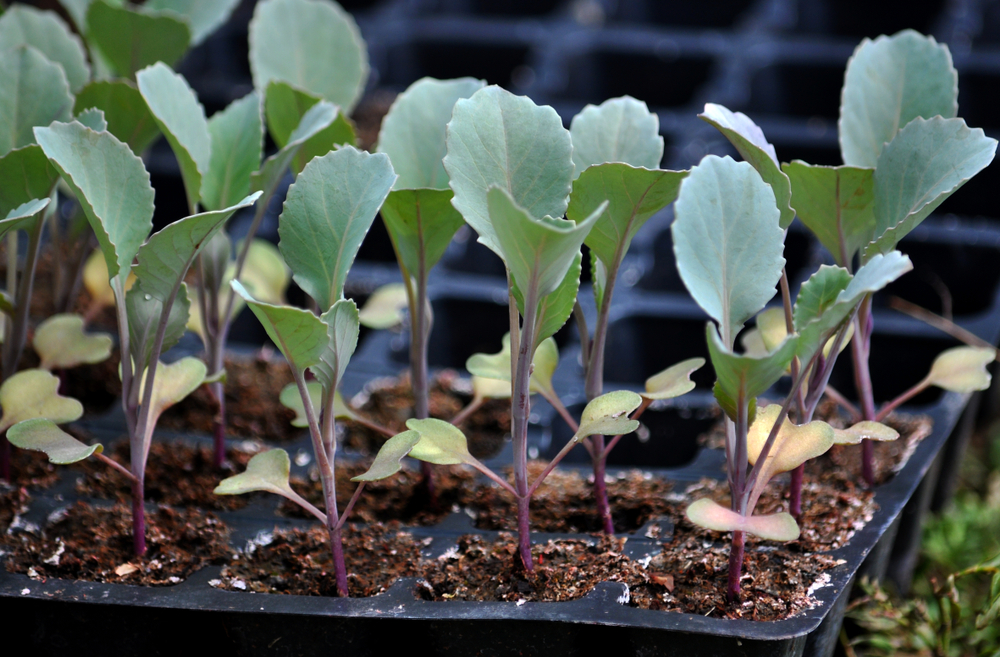Cabbages are usually grown from seedlings, and these seedlings vary in size and height depending on the growing environment and variety. If you are a seasoned cabbage gardener, you might have seen some thin and tall cabbage seedlings in your seedling bed or bought them in a nursery. So, what causes cabbage seedlings to be weak and tall? Will leggy cabbage seedlings even produce healthy heads?
This article will cover possible reasons for cabbage seedlings becoming leggy and what to do to encourage healthy growth.
What does it mean by leggy seedlings?
When some vegetable seedlings are exposed to unfavorable weather conditions, they tend to develop fewer leaves and grow tall and thin. The tendency to grow tall and thin is what is referred to as being leggy.
Well, while there is no specific height for seedlings, leggy seedlings are often considered unhealthy. They are usually weak, lanky, fragile, and can easily bend and break. Sometimes you may notice leggy seedlings appearing yellowish. All these signs indicate that there is an underlying issue.
Why do cabbage seedlings get leggy?
The main reason for seedlings to get leggy is when they don’t get enough light. This is most likely to happen when you start cabbage in shady areas, indoors, or even in a greenhouse that receives partial shade during the day. While searching for adequate light, seedlings will grow taller and bend towards the side with more light.
Apart from the shade, growing cabbage seedlings in darkness will also contribute to them getting leggy.
How to fix leggy seedlings
Dealing with leggy seedlings is not easy, especially when they have developed significantly. However, if you realize the inappropriate lengthening of cabbage seedlings early on the first day, you can try to save them before they get leggy.
- Provide more light as soon as possible to stop the seedlings from getting longer.
- Turn off or completely remove heat mats.
- Start a new seedling bed and provide it with adequate light and water.
- Give the seedlings adequate support when transplanting so that they give out a strong cabbage head.
- Apply a mild fertilizer once the seeds develop two sets of true leaves.
- Add water to the lower seedling trays so they can take the water they need from the soil. Watering from above can break the already weak seedlings.
- Introduce a light wind with an oscillating fan to create a gentle wind that passes through the seedling area and gives them a straight shape. The oscillating fan also helps reduce the chances of fungal infections.
How to prevent seedlings from getting leggy
To protect your cabbage seedlings from getting leggy, consider the following tips.
- Provide adequate light to the seedlings just after they start germinating. Remember, it takes a single day in darkness and insufficient light for your plants to get irreversibly leggy.
- Plan on how to give your seedlings supplemental light before you start seedlings indoors. A sunny window may not provide enough light for the seedlings, and that is why you may need to invest in grow lights.
- Turn on the grow lights once the seeds start to sprout. To be accurate, you can turn on the glow lights a few days after you have sown the seeds. The light may not be necessary for germination but is essential once they sprout.
- If you have covered your seed starting tray or pot, remove the cover immediately after the seeds germinate.
- Have your grow lights suspended just above the seedlings. Hanging grow lights far away from the seedlings will not help because they will still get leggy. Fluorescent lights are safe to keep just above the cabbage seedlings, while led bulbs should be kept slightly above the seedlings because they emit heat. As the seedlings grow, adjust the position of the lights to avoid burning the young plants.
- For indoor plants, provide a minimum of 12 hours of light and a maximum of 16 hours. The ideal darkness time should be about 8 hours. To avoid making mistakes, set a simple light timer.
- For outdoor seed preparation, set them in an ideal sunny spot at the right time of the year, depending on your gardening zone. Do not start seeds outdoors in winter because the days are usually shorter, leading to unhappy leggy seedlings.
Conclusion
Cabbage is a loved vegetable that you can rarely miss in home gardens, grocery stores, and kitchens. Healthy seedlings can easily produce a good cabbage harvest under favorable growing conditions. To prevent your seedling from getting leggy, provide them with enough light and ideal growing conditions.

